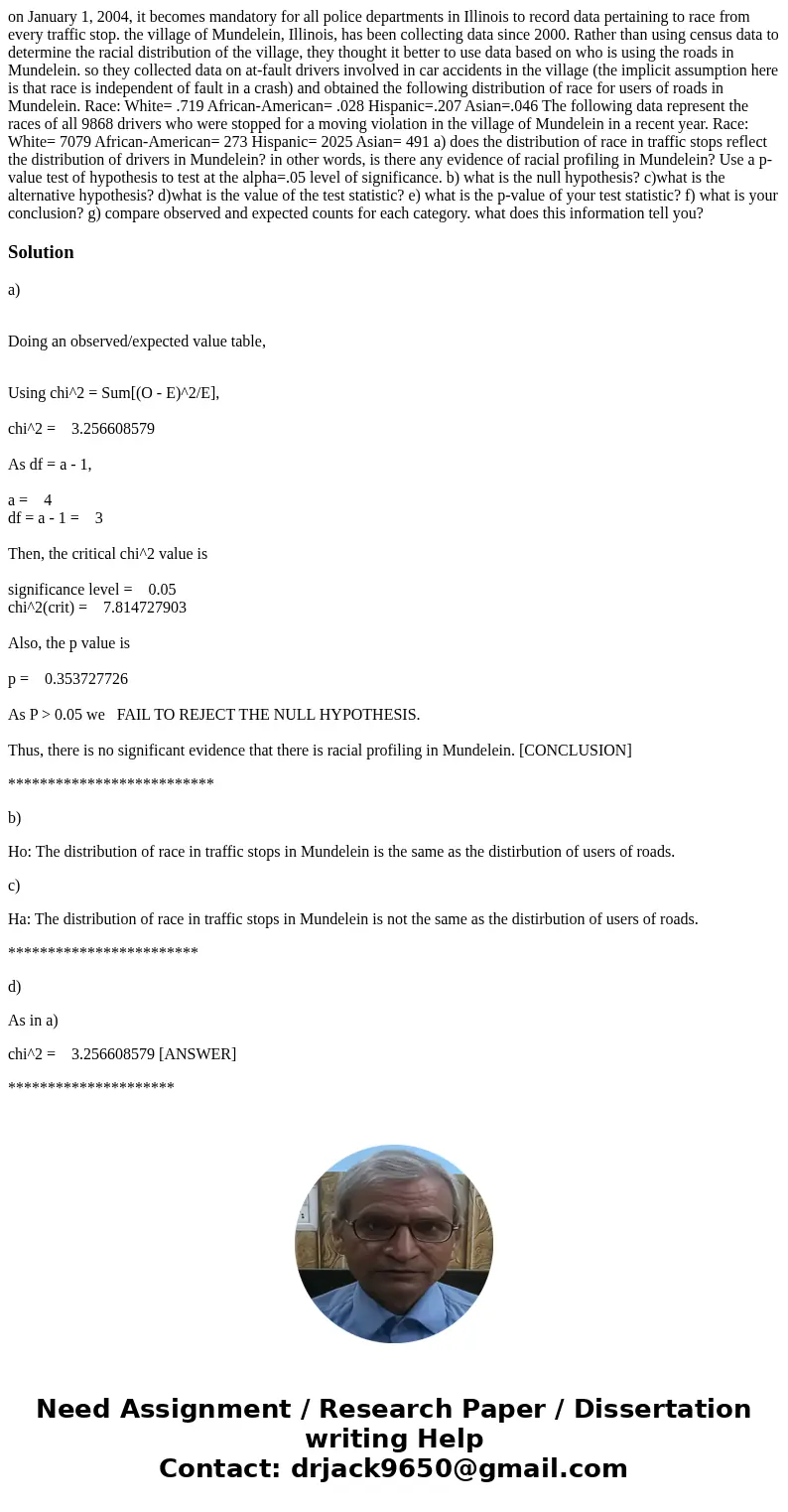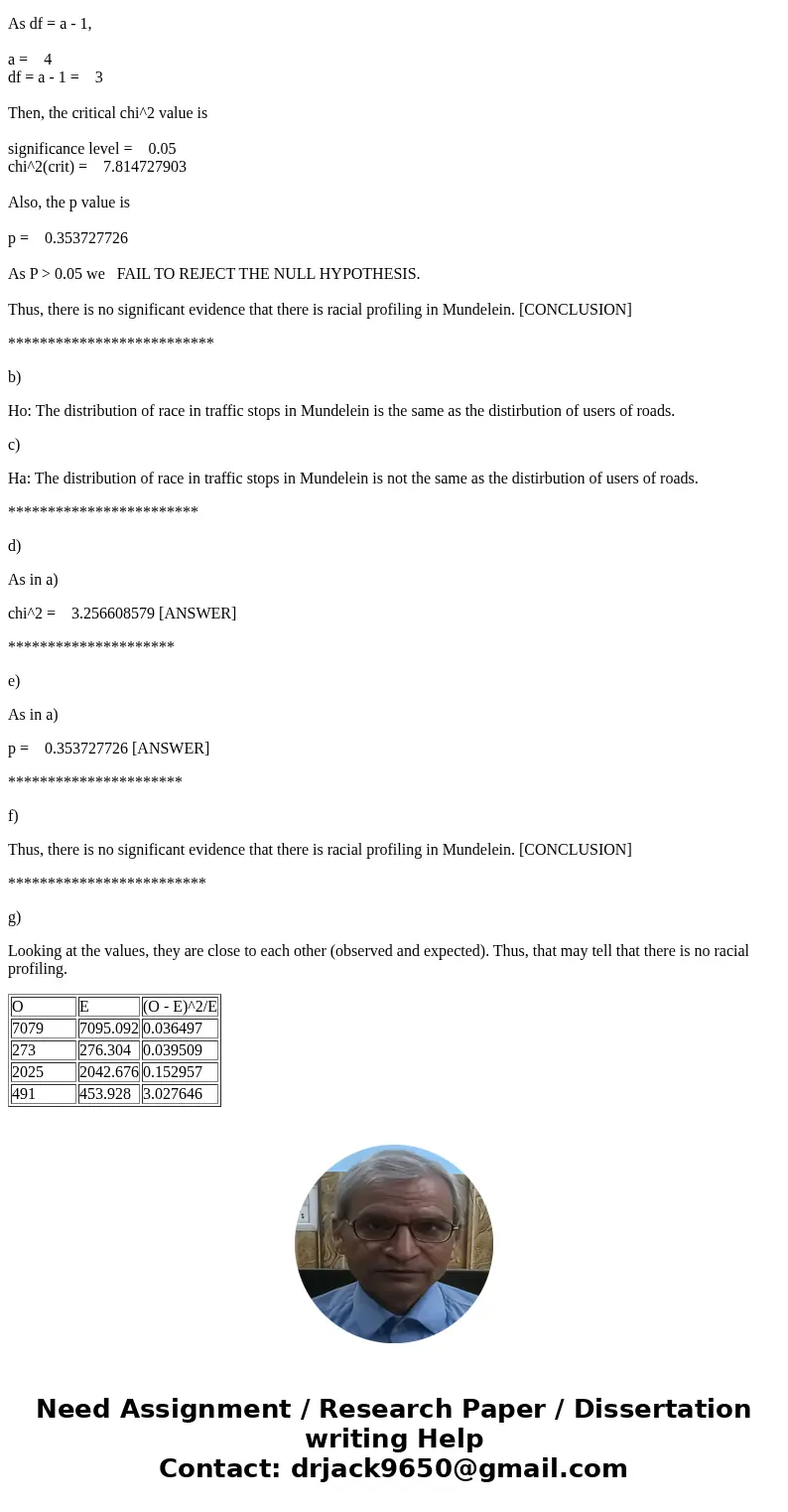on January 1 2004 it becomes mandatory for all police depart
on January 1, 2004, it becomes mandatory for all police departments in Illinois to record data pertaining to race from every traffic stop. the village of Mundelein, Illinois, has been collecting data since 2000. Rather than using census data to determine the racial distribution of the village, they thought it better to use data based on who is using the roads in Mundelein. so they collected data on at-fault drivers involved in car accidents in the village (the implicit assumption here is that race is independent of fault in a crash) and obtained the following distribution of race for users of roads in Mundelein. Race: White= .719 African-American= .028 Hispanic=.207 Asian=.046 The following data represent the races of all 9868 drivers who were stopped for a moving violation in the village of Mundelein in a recent year. Race: White= 7079 African-American= 273 Hispanic= 2025 Asian= 491 a) does the distribution of race in traffic stops reflect the distribution of drivers in Mundelein? in other words, is there any evidence of racial profiling in Mundelein? Use a p-value test of hypothesis to test at the alpha=.05 level of significance. b) what is the null hypothesis? c)what is the alternative hypothesis? d)what is the value of the test statistic? e) what is the p-value of your test statistic? f) what is your conclusion? g) compare observed and expected counts for each category. what does this information tell you?
Solution
a)
Doing an observed/expected value table,
Using chi^2 = Sum[(O - E)^2/E],
chi^2 = 3.256608579
As df = a - 1,
a = 4
df = a - 1 = 3
Then, the critical chi^2 value is
significance level = 0.05
chi^2(crit) = 7.814727903
Also, the p value is
p = 0.353727726
As P > 0.05 we FAIL TO REJECT THE NULL HYPOTHESIS.
Thus, there is no significant evidence that there is racial profiling in Mundelein. [CONCLUSION]
**************************
b)
Ho: The distribution of race in traffic stops in Mundelein is the same as the distirbution of users of roads.
c)
Ha: The distribution of race in traffic stops in Mundelein is not the same as the distirbution of users of roads.
************************
d)
As in a)
chi^2 = 3.256608579 [ANSWER]
*********************
e)
As in a)
p = 0.353727726 [ANSWER]
**********************
f)
Thus, there is no significant evidence that there is racial profiling in Mundelein. [CONCLUSION]
*************************
g)
Looking at the values, they are close to each other (observed and expected). Thus, that may tell that there is no racial profiling.
| O | E | (O - E)^2/E |
| 7079 | 7095.092 | 0.036497 |
| 273 | 276.304 | 0.039509 |
| 2025 | 2042.676 | 0.152957 |
| 491 | 453.928 | 3.027646 |


 Homework Sourse
Homework Sourse